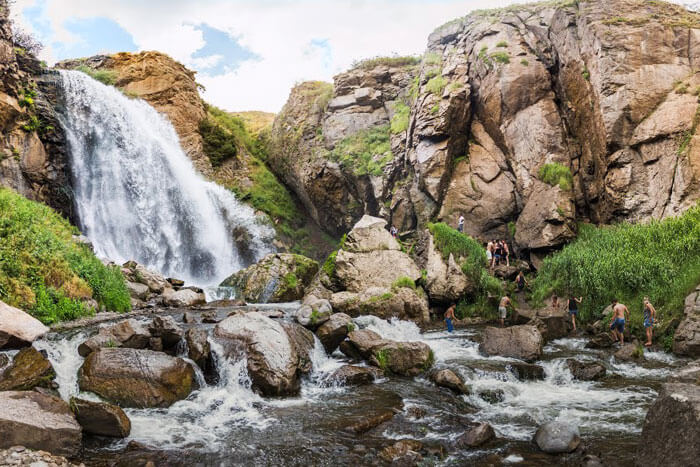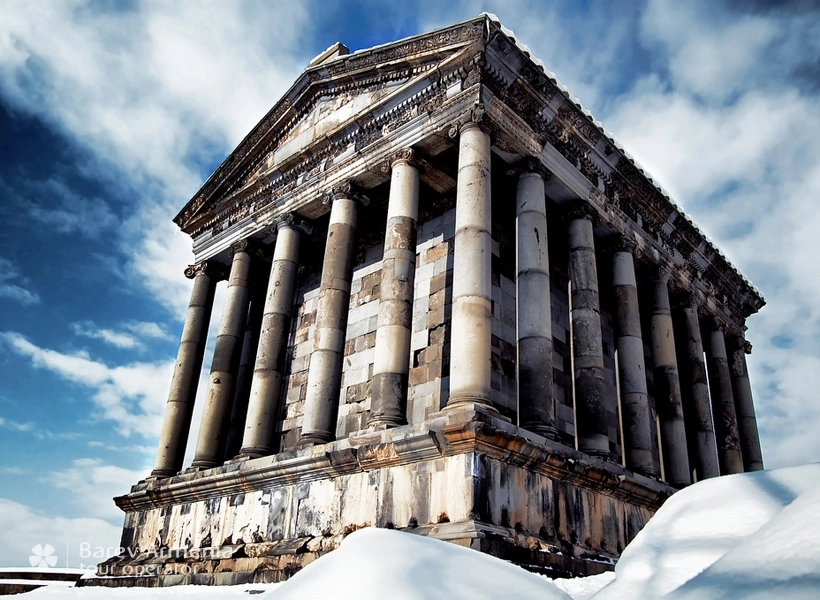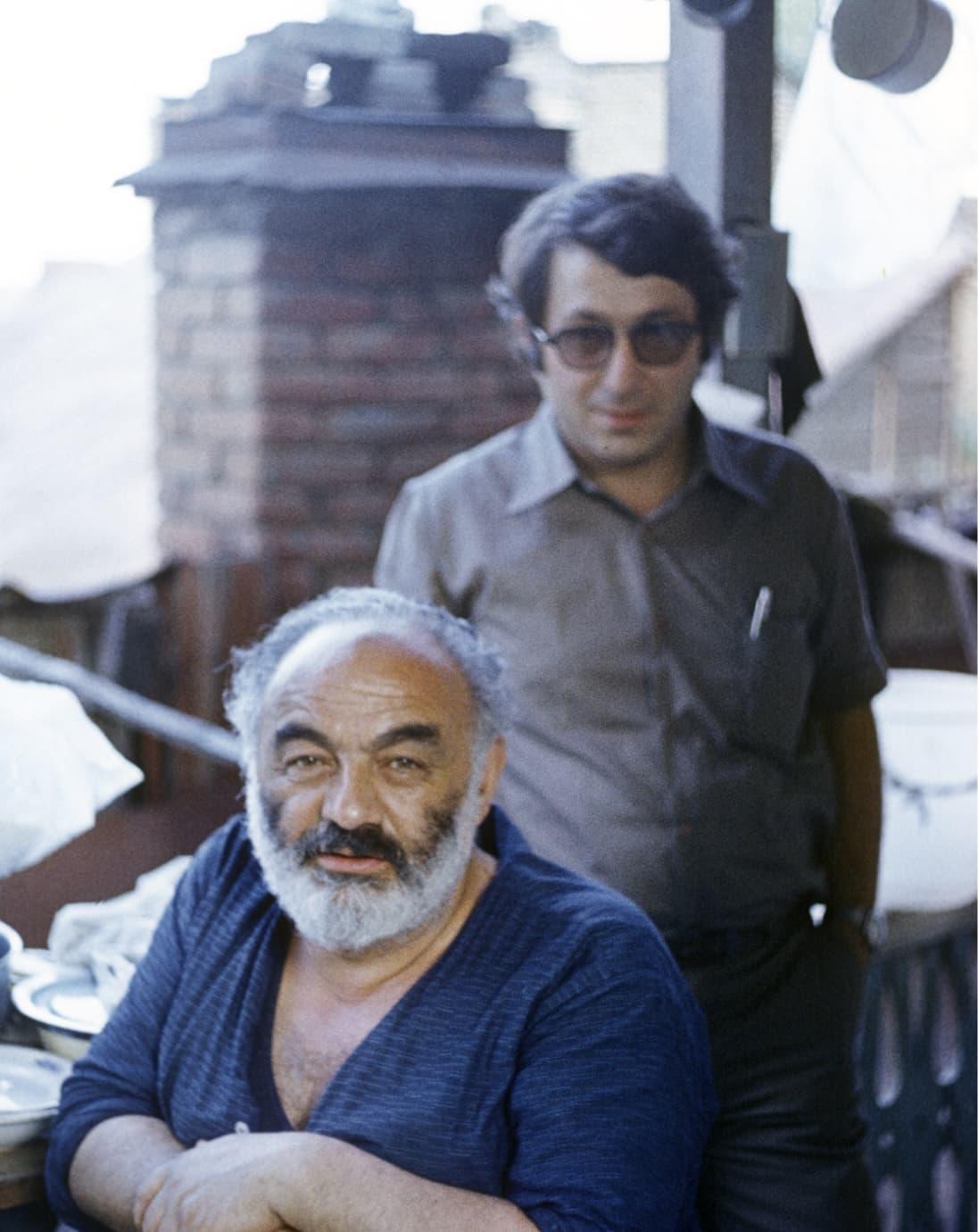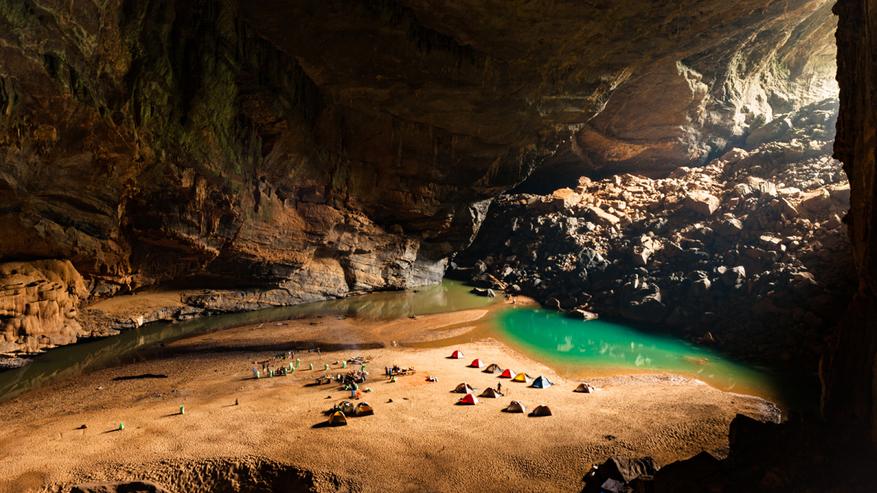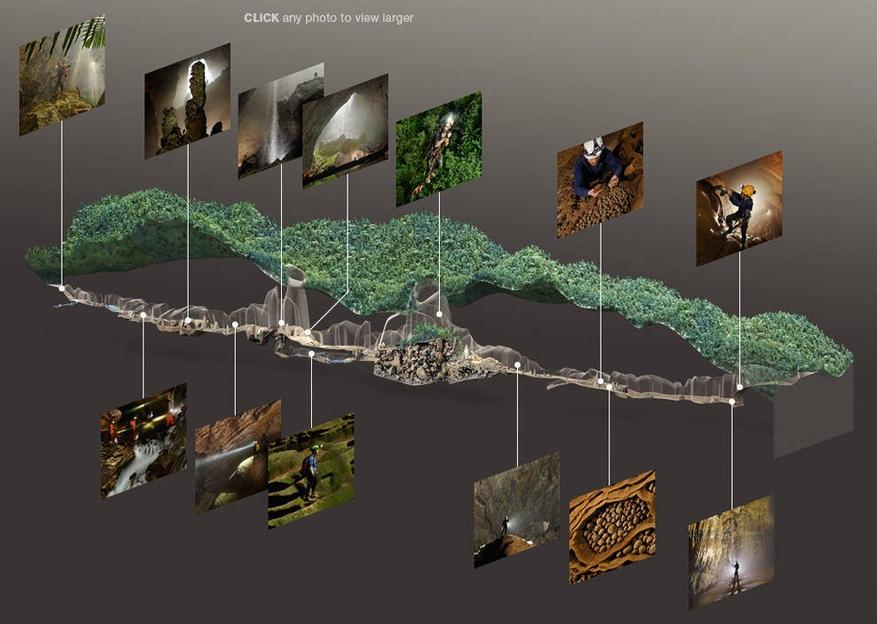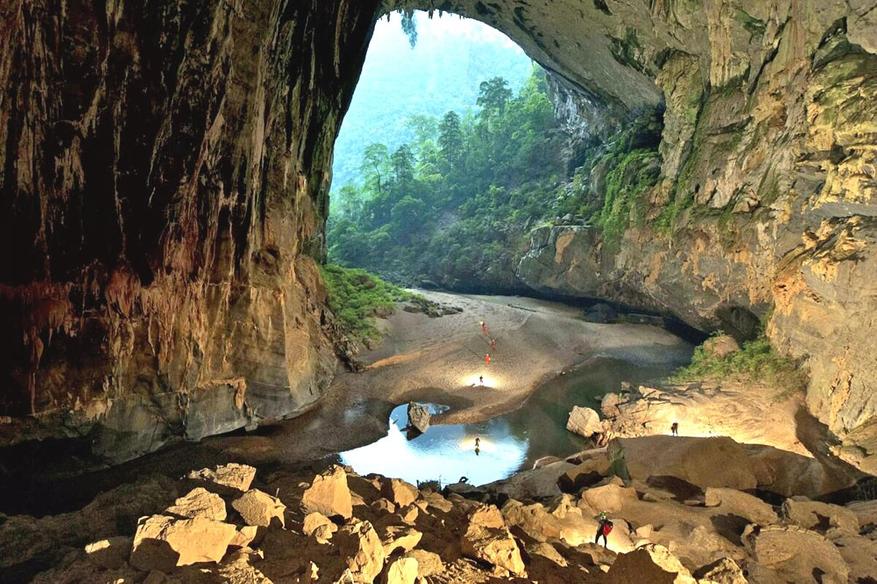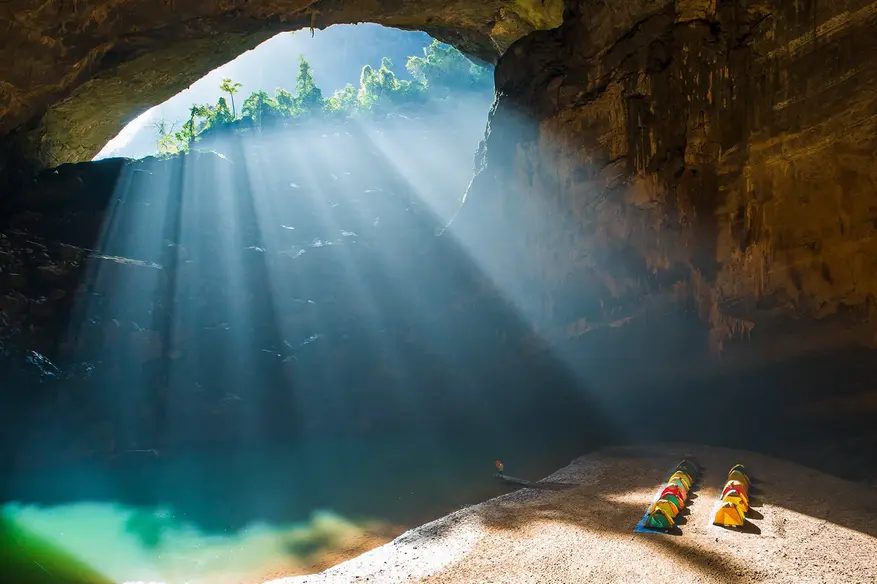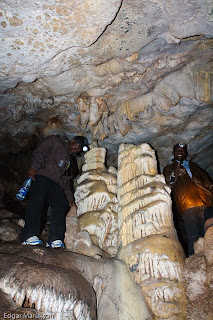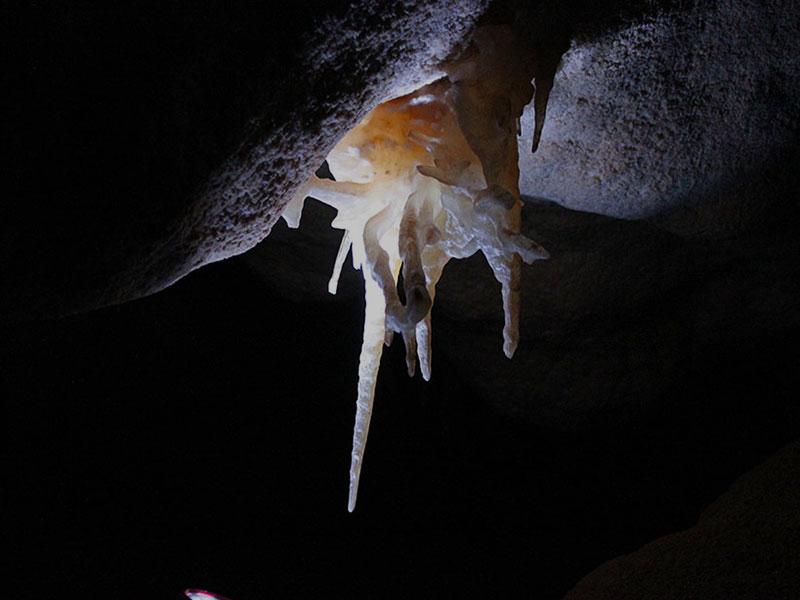Vayots Dzor is located in the southeastern part of Armenia. It borders on Nakhichevan in the west and the Kalbajar District in the east. Vayots Dzor is surrounded by high mountains and mountain chains that make natural barriers for its neighboring areas. The region has rich flora and fauna.
The Province of Vayots Dzor has the least number of population in Armenia. The three important towns are Yeghegnadzor, Jermuk, and Vayk. The people here are very conservative: they celebrate nearly all the religious and traditional festivals. The most famous celebration is the harvest festival which takes place every year on the second Sunday of October.
Yeghegnadzor is the historic and cultural centre of Vayots Dzor. It is one of the oldest residences in Armenia which is situated on the right bank of the River Arpa. The city’s name was first mentioned in the 7th century. For some period of time it was known as Mikoyan; in honour of Great Armenian politician Anastas Mikoyan.
Historical Sights of Vayots Dzor
Noravank Monastery
The most popular place in Vayots Dzor is the Noravank Monastery of the 13th century. The monastic complex includes the church of St. Karapet, St. Grigor chapel and the church of St. Astvatsatsin (Holy Mother of God).
The monastery is best known for its two-storey Surb Astvatsatsin Church which was completed in 1339. The monastery is a masterpiece created by the talented sculptor and miniaturist Momik. Noravank is the last work of the master, who died the same year Noravank was completed and was buried at the church.
In 2002 the Monastery of Noravank was included in the UNESCO World Heritage List.
Jermuk Waterfall
The second important town in Vayots Dzor is Jermuk — the most famous and popular sanatorium in Armenia. It is surrounded by mountains and thick forests. Jermuk is rich with fresh and mineral water springs. There is also an underground geyser used for drinking and taking baths. It cures various diseases and neurological disorders.
The waterfall of Jermuk is a must-see attraction of Vayots Dzor. It is the second-largest waterfall in Armenia (70 meters). Together with the picturesque surroundings, the waterfall makes an impressive view.
Kechut Reservoir
3.5 km to the South from Jermuk, on the river Arpa, Kechut Water Reservoir is located. It was built in 1981 to regulate the water level of Lake Sevan.
The population of Vayots Dzor Region
According to the census of 2011, only 52 324 people live in the province of Vayots Dzor: 99.74 % Armenians, 0.15% Russians, 0.04 % Ukrainians.
Yeghegnadzor

Yeghegnadzor is the administrative centre of Vayots Dzor Region. It is situated in the southeastern part of Armenia on the banks of the Srkghonk River, a tributary of the Arpa River. The city is 123 km south of the capital Yerevan, at the height of 1194 meters above sea level. The climate is mild with snowy winters and warm summers.
History of Yeghegnadzor
The name of the city consists of two Armenian words: «yegheg» meaning «cane» and «dzor» meaning «valley», so the name means «valley of canes». It is one of the oldest residences of Armenia. The city was first mentioned in the 5th century. It belonged to the Vayots Dzor canton of Syunik which was the 9th province of Great Armenia.
Many churches, monastic complexes, bridges and caravanserais were built in the city during the 10th-13th centuries.
In 1747, when Eastern Armenia was still under Iranian rule, the city became part of Nakhichevan Khanate and was known as Keshishkend. In 1935 it was renamed Mikoyan after the politician and Bolshevik leader Anastas Mikoyan. In 1956 the town got its present name.
Sights of Yeghegnadzor
Yeghegnadzor is the historical and cultural centre of Vayots Dzor. Many ancient churches are located here. The most popular place in the town is the Noravank Monastery of the 13th-14th centuries. Zorats St. Astvatsatsin Church (Holy Mother of God) is another work of art to see in Yeghegnadzor.
The Cathedral of the Holy Mother of God of the 12th century (also known as St. Sarkis) serves as the seat of the Vayots Dzor Diocese of the Armenian Apostolic Church.
Not far from the town of Yeghegnadzor is Spitakavor Monastery of the Holy Mother of God which was built in 1321. It is a remarkable monastery isolated in nature with the stunning surrounding scenery. The remains of the Armenian national hero and military leader Garegin Nzhdeh were secretly buried in the yard of Spitakavor Monastery in the 1980s. He had died in a Soviet prison in 1955.
The historic University of Gladzor of the 13th century was located at the outskirts of Yeghegnadzor. It was a great centre of learning which operated until 1340.
In 1984 on the 700th anniversary of Gladzor University, the Historic-Cultural Preserve-Museum of Gladzor University was established in the historic church of Surb Hakob (St. Jacob) in Vernashen village.
There is also an archaeological museum in the town, as well as an art school, a sports school and a musical academy.
The popular harvest festival takes place in Yeghegnadzor every year on the second Sunday of October.
Վայոց ձորը գտնվում է Հայաստանի հարավ-արևելյան մասում։ Արևմուտքում սահմանակից է Նախիջևանին, արևելքից՝ Քալբաջարի շրջանին։ Վայոց ձորը շրջապատված է բարձր լեռներով և լեռնաշղթաներով, որոնք բնական պատնեշներ են ստեղծում նրա հարևան տարածքների համար։ Տարածաշրջանն ունի հարուստ բուսական և կենդանական աշխարհ։
Հայաստանում ամենաքիչ բնակչությունն ունի Վայոց ձորի մարզը։ Երեք կարևոր քաղաքներն են Եղեգնաձորը , Ջերմուկը և Վայքը ։ Այստեղ մարդիկ շատ պահպանողական են. նրանք նշում են գրեթե բոլոր կրոնական և ավանդական տոները: Ամենահայտնի տոնակատարությունը բերքի տոնն է, որը տեղի է ունենում ամեն տարի հոկտեմբերի երկրորդ կիրակի օրը:
Եղեգնաձորը Վայոց ձորի պատմամշակութային կենտրոնն է։ Այն Հայաստանի հնագույն բնակավայրերից է, որը գտնվում է Արփա գետի աջ ափին։ Քաղաքի անունը առաջին անգամ հիշատակվել է 7-րդ դարում։ Որոշ ժամանակ այն հայտնի էր որպես Միկոյան; ի պատիվ հայ մեծ քաղաքական գործիչ Անաստաս Միկոյանի.
Վայոց ձորի պատմական տեսարժան վայրեր
Նորավանք վանք
Վայոց ձորի ամենասիրված վայրը 13-րդ դարի Նորավանք վանքն է։ Վանական համալիրը ներառում է Սուրբ Կարապետ եկեղեցին, Սուրբ Գրիգոր մատուռը և Սուրբ Աստվածածին եկեղեցին։
Վանքը առավել հայտնի է իր երկհարկանի Սուրբ Աստվածածին եկեղեցով, որն ավարտվել է 1339 թվականին: Վանքը գլուխգործոց է, որը ստեղծել է տաղանդավոր քանդակագործ և մանրանկարիչ Մոմիկը : Նորավանքը վարպետի վերջին գործն է, ով վախճանվել է նույն թվականին Նորավանքի ավարտին և թաղվել եկեղեցում։
2002 թվականին Նորավանք վանքը ներառվել է ՅՈՒՆԵՍԿՕ-ի համաշխարհային ժառանգության ցանկում։
Ջերմուկի ջրվեժ
Վայոց ձորի երկրորդ կարևոր քաղաքը Ջերմուկն է ՝ Հայաստանի ամենահայտնի և սիրված առողջարանը։ Շրջապատված է լեռներով և թավուտ անտառներով։ Ջերմուկը հարուստ է քաղցրահամ և հանքային ջրերի աղբյուրներով։ Կա նաև ստորգետնյա գեյզեր, որն օգտագործվում է խմելու և լոգանք ընդունելու համար։ Այն բուժում է տարբեր հիվանդություններ և նյարդաբանական խանգարումներ։
Ջերմուկի ջրվեժը Վայոց ձորի տեսարժան վայրն է։ Այն Հայաստանի մեծությամբ երկրորդ ջրվեժն է (70 մետր): Գեղատեսիլ շրջապատի հետ մեկտեղ ջրվեժը տպավորիչ տեսարան է բացում։
Կեչուտի ջրամբար
Ջերմուկից 3,5 կմ դեպի հարավ՝ Արփա գետի վրա, գտնվում է Կեչուտի ջրամբարը։ Այն կառուցվել է 1981 թվականին՝ Սեւանա լճի ջրի մակարդակը կարգավորելու նպատակով։
Վայոց ձորի մարզի բնակչությունը
2011 թվականի մարդահամարի տվյալներով Վայոց ձորի մարզում ապրում է ընդամենը 52 324 մարդ՝ 99,74 % հայեր, 0,15 % ռուսներ, 0,04 % ուկրաինացիներ։
Եղեգնաձոր

Եղեգնաձորը Վայոց ձորի մարզի վարչական կենտրոնն է ։ Գտնվում է Հայաստանի հարավ-արևելյան մասում՝ Արփա գետի վտակ Սրկղոնք գետի ափին։ Քաղաքը գտնվում է մայրաքաղաք Երևանից 123 կմ հարավ , ծովի մակարդակից 1194 մ բարձրության վրա։ Կլիման մեղմ է՝ ձյունառատ ձմեռներով և տաք ամառներով։
Եղեգնաձորի պատմություն
Քաղաքի անունը կազմված է հայերեն երկու բառից՝ «եղեգ» նշանակում է «եղեգ» և «ձոր»՝ «հովիտ», ուստի անունը նշանակում է «ձեռնափայտի հովիտ»։ Այն Հայաստանի հնագույն բնակավայրերից է։ Քաղաքն առաջին անգամ հիշատակվել է 5-րդ դարում։ Պատկանել է Սյունիքի Վայոց ձորի կանտոնին, որը Մեծ Հայքի 9-րդ նահանգն էր։
10-13-րդ դարերում քաղաքում կառուցվել են բազմաթիվ եկեղեցիներ, վանական համալիրներ, կամուրջներ, քարավանատներ։
1747 թվականին, երբ Արևելյան Հայաստանը դեռ իրանական տիրապետության տակ էր, քաղաքը մտավ Նախիջևանի խանության մեջ և հայտնի էր Քեշիշքենդ անունով։ 1935 թվականին այն վերանվանվել է Միկոյան՝ քաղաքական գործիչ և բոլշևիկների առաջնորդ Անաստաս Միկոյանի անունով։ 1956 թվականին քաղաքը ստացել է իր ներկայիս անվանումը։
Եղեգնաձորի տեսարժան վայրերը
Եղեգնաձորը Վայոց ձորի պատմամշակութային կենտրոնն է։ Այստեղ են գտնվում բազմաթիվ հնագույն եկեղեցիներ։ Քաղաքի ամենասիրված վայրը 13-14-րդ դարերի Նորավանք վանքն է։ Զորաց Սուրբ Աստվածածին եկեղեցին (Սուրբ Աստվածածին) արվեստի ևս մեկ գործ է Եղեգնաձորում:
12-րդ դարի Սուրբ Աստվածածին տաճարը (հայտնի է նաև Սուրբ Սարգիս անունով) Հայ Առաքելական եկեղեցու Վայոց ձորի թեմի նստավայրն է։
Եղեգնաձոր քաղաքից ոչ հեռու գտնվում է Սուրբ Աստվածածնի Սպիտակավոր վանքը, որը կառուցվել է 1321 թվականին: Այն բնության մեջ մեկուսի ուշագրավ վանք է՝ շրջապատող ապշեցուցիչ տեսարաններով: Հայոց ազգային հերոս և զորավար Գարեգին Նժդեհի աճյունը գաղտնի ամփոփվել է Սպիտակավոր վանքի բակում 1980-ականներին։ Նա մահացել էր խորհրդային բանտում 1955թ.
Եղեգնաձորի ծայրամասում էր գտնվում 13-րդ դարի Գլաձորի պատմական համալսարանը։ Այն եղել է մեծ ուսումնական կենտրոն, որը գործել է մինչև 1340 թվականը։
1984 թվականին Գլաձոր համալսարանի հիմնադրման 700-ամյակին Վերնաշեն գյուղի Սուրբ Հակոբ (Սուրբ Հակոբ) պատմական եկեղեցում ստեղծվել է Գլաձորի համալսարանի պատմամշակութային արգելոց-թանգարանը։
Քաղաքում կա նաև հնագիտական թանգարան, ինչպես նաև արվեստի դպրոց, մարզադպրոց և երաժշտական ակադեմիա։
Ամեն տարի հոկտեմբերի երկրորդ կիրակի օրը Եղեգնաձորում տեղի է ունենում բերքի հանրաճանաչ տոնը։

